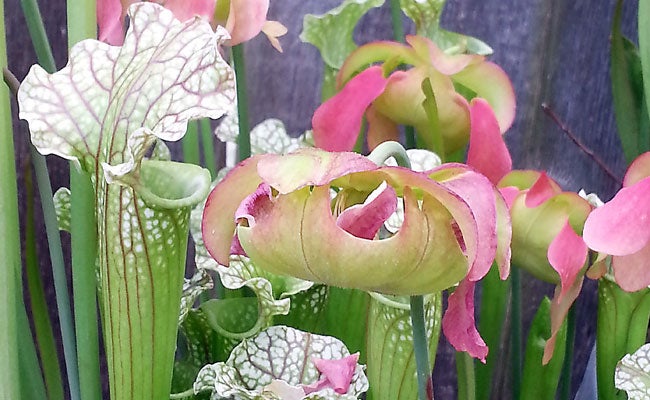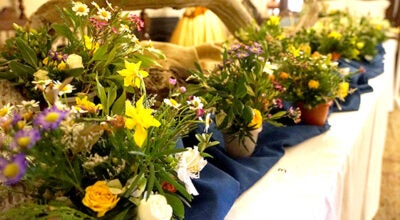Master Gardeners to host talk on carnivorous plants
Published 12:00 am Wednesday, June 8, 2016

- Photos courtesy of Burnley Cook — Natchez gardener Burnley Cook will talk Thursday about his love of growing carnivorous plants in his garden. A stand of pitcher plants in Cook’s garden puts forth pink and green blooms.
NATCHEZ — An Adams County Master Gardeners event will turn the library into a little shop of horrors Thursday for a discussion of carnivorous plants.
Local gardener and carnivorous plant enthusiast Burnley Cook will give a talk 10 a.m. Thursday at the George Armstrong Library in Natchez to share how he has successfully bred and cultivated his large collection of insect-eating plants.
He said many acquaintances find his passion for plants such as Venus flytraps and pitcher plants to be “bizarre,” but he finds the creatures fascinating.
The Adams County Master Gardeners approached Cook when he posted pictures of his extensive collection online, he said.
The talk will include a dissection of at least one carnivorous plant to show how it hunts, and Cook said one or two specimens from his personal collection will be given away as door prizes.
“I’ll show how to grow them and exactly how they go about luring and capturing and digesting insects,” Cook said. “Most people have a terrible time when they try their hand at growing one of these things.”
The secret to success, Cook said, is knowledge about the plants themselves.
“If you know the conditions they want, they will survive for decades, and keep multiplying,” he said. “You can start with one and end up with 20 or 30 in no time.”
Cook said one of the most common misconceptions he hears is that carnivorous plants are only native to the tropics.
“Most people think these things come from dark, steamy rainforests,” he said. “Actually, the majority of carnivorous plants are quite accessible to us. All the pitcher plants grow on the coastal plains, from New Jersey to Florida and across the Gulf Coast.”
Venus flytraps, he said, are native only to North Carolina, though they have been cultivated around the world.
“Funny enough, in (the 1986 film) ‘Little Shop of Horrors,”’Audrey was supposed to be the progeny of a Venus flytrap and a butterwort,” Cook said.
Our region is home to at least eight species of pitcher plants as well as sundew and butterwort, Cook said, and they will thrive in local gardens if properly tended.
The care and keeping of a carnivorous plant, Cook said, is very different than other plants.
“They are not cultivated plants like tomatoes, petunias, things like that,” Cook said. “They cannot handle excess amounts of minerals and chemicals in the water. Tap water kills these things.”
Rainwater or reverse-osmosis water is the best bet, Cook said. The soil surrounding them must also be specific; fertilizers and pre-mixed potting soil is highly dangerous to carnivorous plants.
“Salt is their biggest enemy,” Cook said. “They think they have to feed it Miracle Gro. That will kill it. The safest thing to use to plant these in is peat moss and perlite. Sand is very inert, so that’s also widely used.”
The best way to care for a plant is to more or less leave it alone, Cook said.
“If you get one, stick it in the sunniest place you can get it, make sure it gets rainwater or purified water, and leave it alone,” he said.
Those hoping to adopt a carnivorous plant to control pesky flies or mosquitos will be sorely disappointed, Cook warned.
“They’ll actually attract more insects than what they’ll eat,” he said. “As far as an insect controlling device, they are completely ineffectual.”
The joys of gardening carnivorous plants, he said, come from their beauty and ability to fascinate gardeners and guests.
“One of the neatest things is in parts of summer when lightning bugs come out at night,” he said. “If the pitcher plant catches one, you can watch the trap light up. It’s almost like a balloon glow.”





